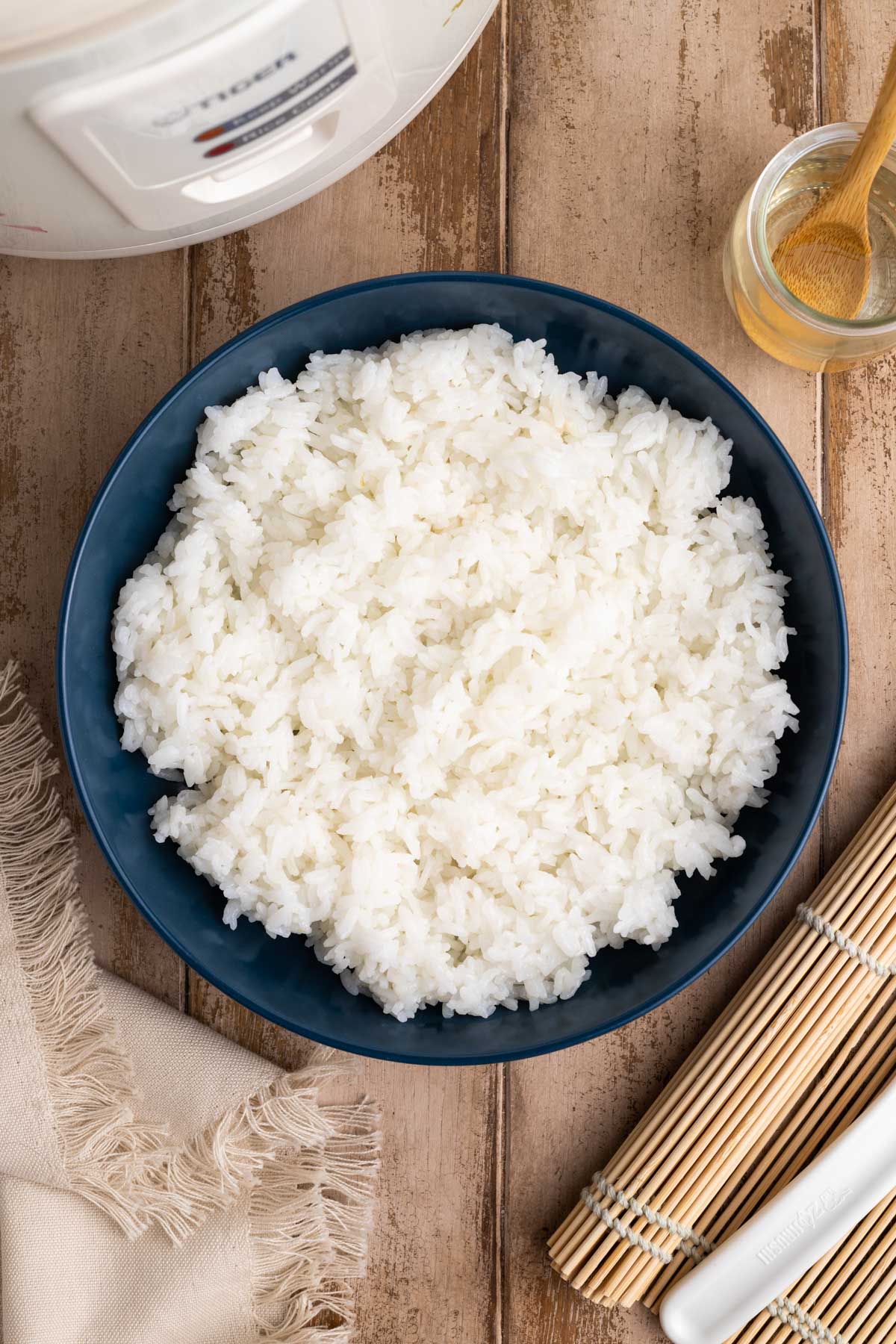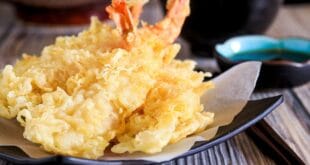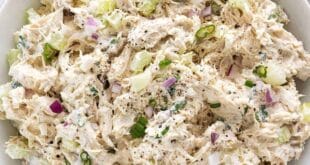
Classic Sushi Rice Recipe with the Perfect Sticky Texture
A good Sushi Rice Recipe begins with well-cooked short-grain rice and a balanced mix of vinegar, sugar, and salt. The rice should look shiny and feel slightly sticky, but not mushy or dry. The most important step is to add the vinegar mixture while the rice is still warm, then gently fold it in, don’t stir, to coat each grain evenly without breaking it.This recipe provides the method for preparing authentic Japanese sushi rice, the traditional foundation for sushi rolls, nigiri, and donburi dishes.Difficulty: Easy
Ingredients
Method
Rinse the rice
- Place the rice in a large bowl and rinse it in cold water, stirring gently with your hands. Drain and repeat 3–4 times until the water runs mostly clear. This removes excess starch and prevents the rice from becoming gummy.
Cook the rice
- Combine the rinsed rice, 2 cups of water, and the kombu (if using) in a rice cooker or a heavy-bottomed pot. If using a rice cooker, simply cook on the regular white rice setting. For stovetop cooking, bring the mixture to a gentle boil over medium heat, then reduce the heat to low, cover tightly, and let it simmer for about 15 minutes. Do not lift the lid during this time. After cooking, turn off the heat and keep the lid on for another 10 minutes to allow the rice to rest and finish steaming evenly.
Prepare the vinegar mixture
- In a small bowl, combine rice vinegar, sugar, and salt. Stir steadily until the sugar and salt begin to dissolve. If the mixture feels grainy, warm it gently over low heat or in the microwave for a few seconds to help everything dissolve completely. Do not let it boil; just warm it enough to blend the ingredients smoothly.
Season the rice
- Once the rice has finished cooking and resting, gently transfer it while still hot into a large, shallow wooden or non-metal bowl (traditionally called a hangiri). If you used kombu during cooking, remove it before seasoning. Evenly drizzle the prepared vinegar mixture over the hot rice. Doing this while the rice is warm helps it absorb the seasoning more effectively.
Mix gently
- Using a wooden paddle or spatula, begin folding the rice in gentle slicing motions. Lift and turn the rice instead of stirring, so the grains don’t break. At the same time, fan the rice with a handheld fan or piece of cardboard to help it cool quickly and absorb the vinegar mixture evenly. Continue folding and fanning until the rice reaches room temperature and looks glossy with a slightly sticky texture.
Serve or store
- Use the sushi rice immediately for rolls or nigiri. If needed, cover it with a damp towel to keep it from drying out.
Video
Notes
Rice type: Always use Japanese short-grain rice; long-grain rice doesn’t have the right texture.
Mixing: Avoid stirring or pressing the rice. It will break and turn mushy.
Cooling: Fanning helps the rice absorb the seasoning evenly and gives it a shine.
Vinegar balance: Adjust sugar and salt slightly to your taste.
Storage: Sushi rice is best used fresh; it hardens when refrigerated.
Tips & Tricks
- No rice cooker: Use a heavy-bottomed pot and a tightly fitted lid for consistent cooking.
- Kombu flavor: Adds subtle umami. Remove before the rice boils to avoid bitterness.
- The perfect ratio: 1:1 rice to water works best for sushi rice.
- Room temperature: Sushi rice should be used slightly warm, not hot or cold.
- Vegan tip: Use vegan rice vinegar (no dashi or fish extracts).
Serving Suggestions
- Sushi rolls: Use for maki, California rolls, or hand rolls.
- Nigiri: Shape into small portions and top with fresh fish or tofu.
- Rice Bowls: Serve with poke, sashimi, or tempura.
- Onigiri: Works for rice balls when slightly firm.
- Sides: Pair well with miso soup and pickled ginger.
Nutrition (per serving, based on 6 servings)
- Calories: ~240
- Protein: 4 g
- Carbs: 53 g
- Fat: 0.5 g
- Fiber: 1 g




